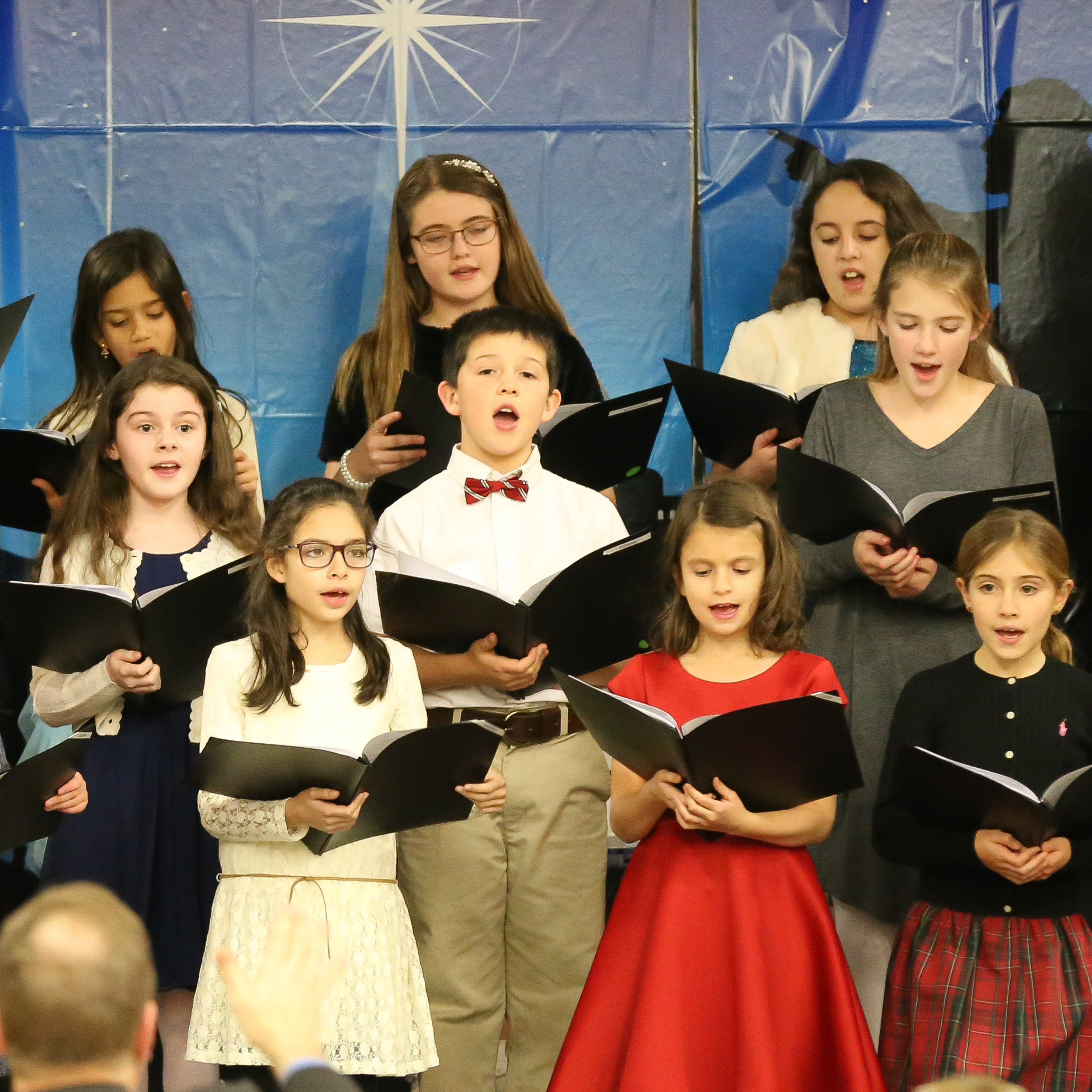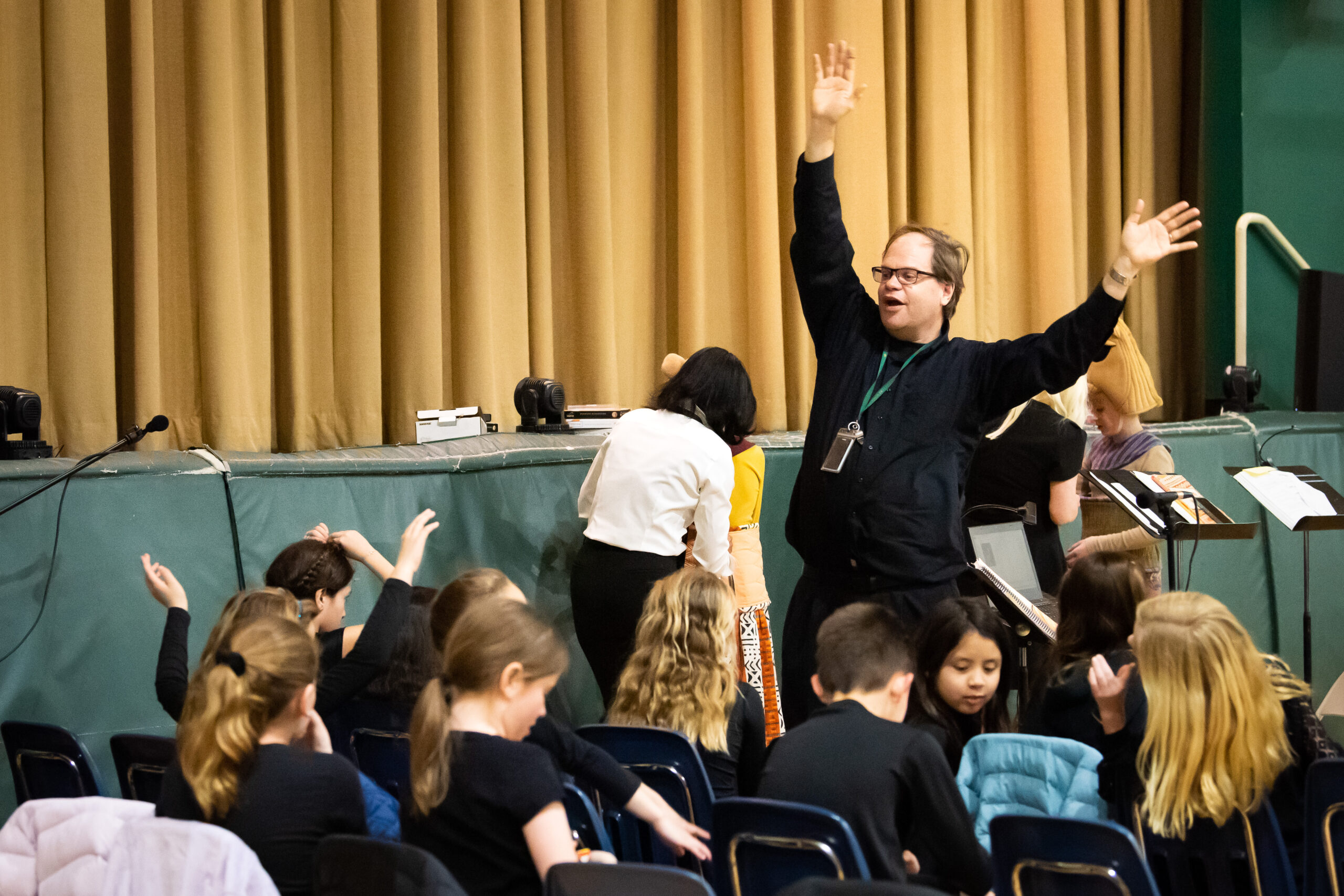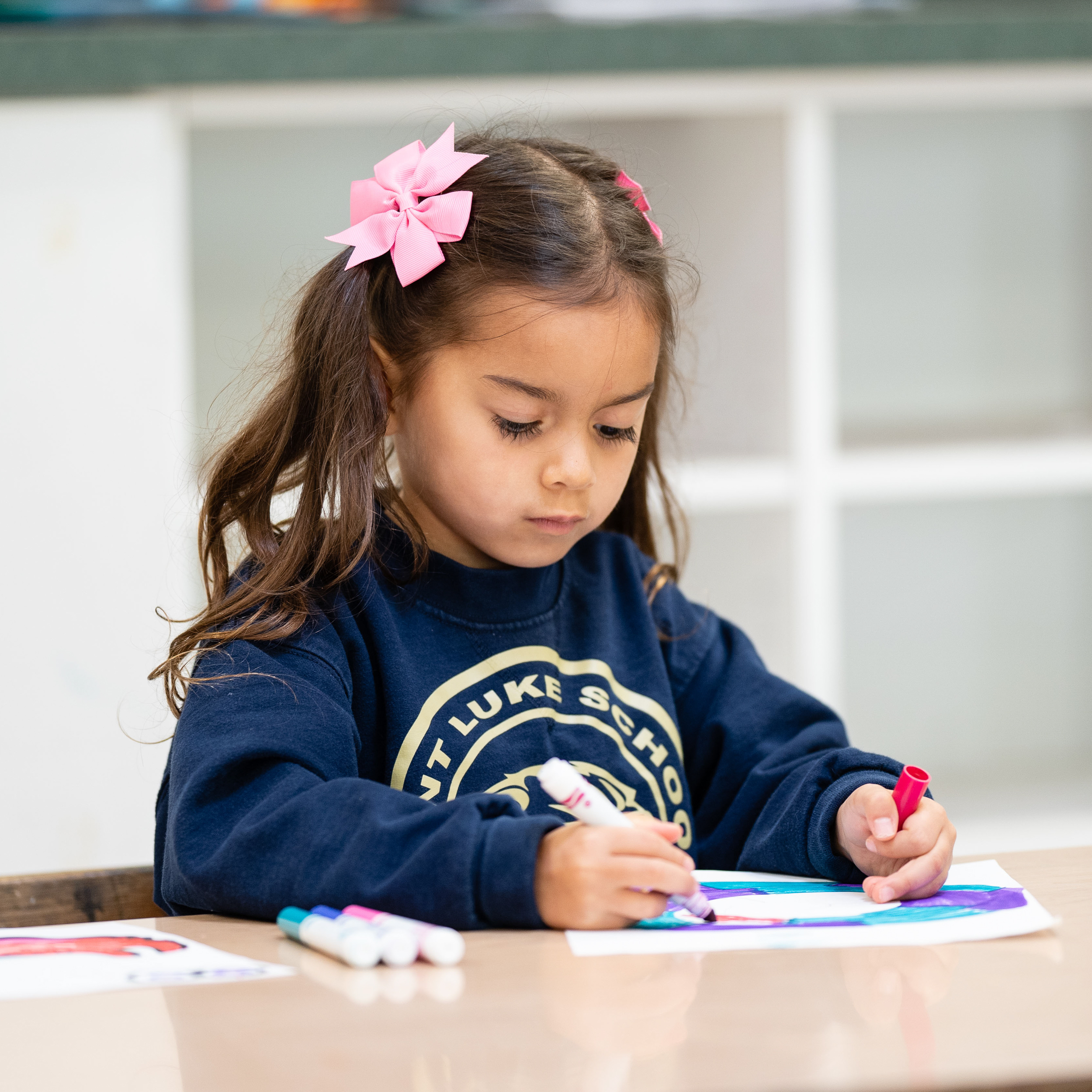PLATO
“I would teach children music, physics, and philosophy; but most importantly music, for the patterns in music and all the arts are the keys to learning.”
The Importance of Music and Art Education
At Saint Luke School, we believe in what the NAMM (National Association of Music Merchant) Foundation advocates about music education when they say “everyday listening skills are stronger in musically-trained children than in those without music training.” Music and art education is a path to life-long learning and knowledge of self and culture. It supports healthy social development and the quality of a young person’s life, and it prepares young people for success in the 21st century workplace. Research has shown that music and art education (1) Improves recall and retention of verbal information, (2) Advances math achievement, (3) Boosts reading and English language arts (ELA) skills, and (4)Increases average SAT scores.


K – 8: The music instruction curriculum develops understanding and appreciation for music both in theory as well as performance. Students will:
- Recognize and repeat rhythmic patterns
- Identify musical notes, notation, and dynamics
- Identify different musical genres
- Perform choral selections
-
Play and perform instruments



K – 8: The Art instruction curriculum develops age appropriate skills in all media. Students will:
- Understand and apply media, techniques, and processes
- Use knowledge of structures and functions
- Choose and evaluate a range of subject matter, symbols, and ideas
- Apply the visual arts in relation to history and cultures
- Reflect on and assess characteristics and merits of their work and the work of others
-
Make connections between the visual arts and other disciplines
